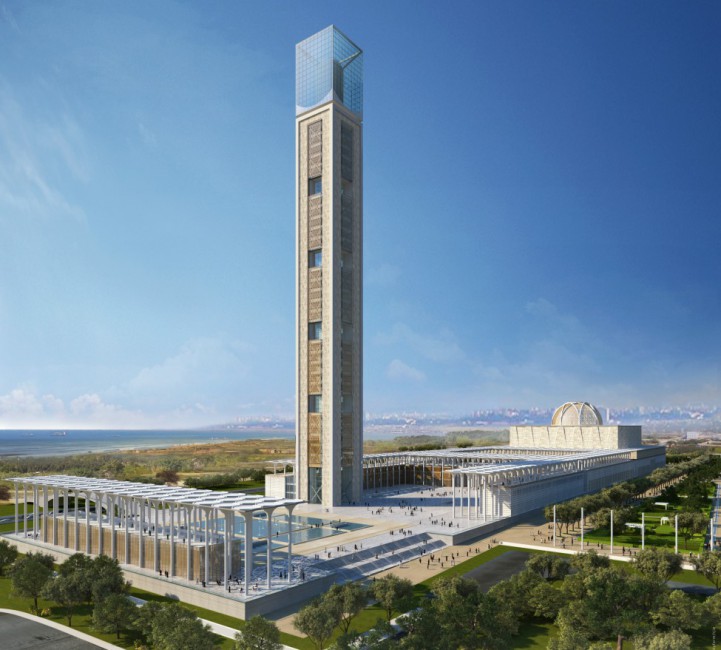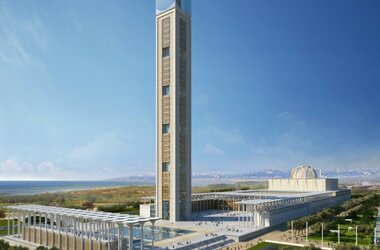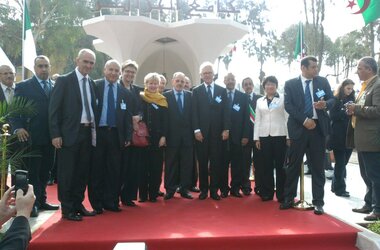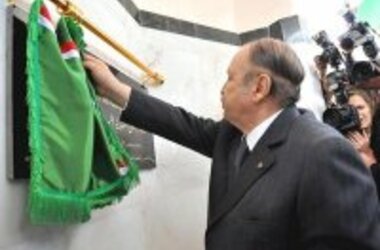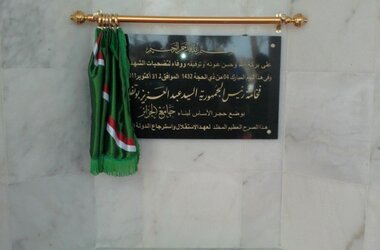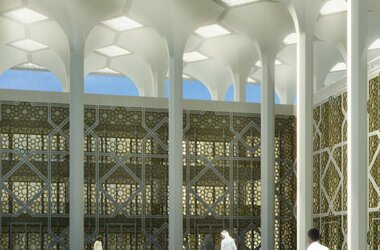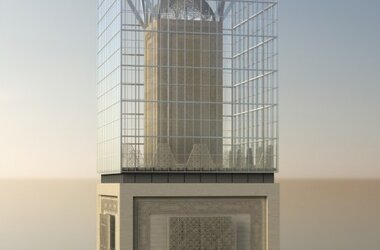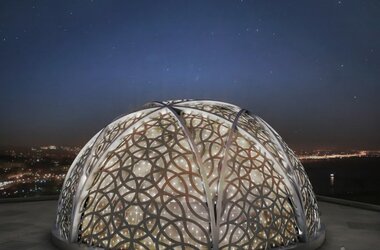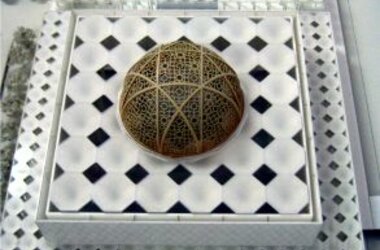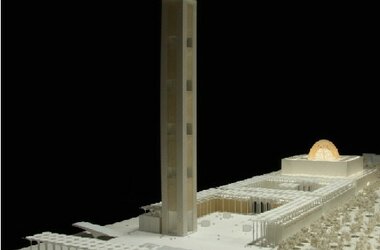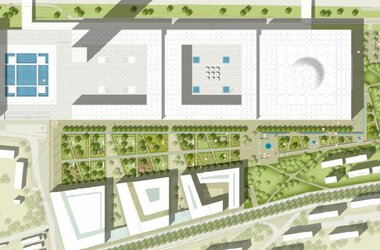The new „Mosquée de l’Algérie“ in Algeria
On 31st October 2011, the cornerstone for the new „Mosquée de l’Algérie“ was laid as part of an official ceremony attended by the German ambassador and the President of Algeria, Mr. Abdelaziz Bouteflika. The ceremony marked the official start of construction on the world’s third largest mosque after the Islamic pilgrimage sites in Mecca and Medina.
On 31st October 2011, the cornerstone for the new „Mosquée de l’Algérie“ was laid as part of an official ceremony attended by the German ambassador and the President of Algeria, Mr. Abdelaziz Bouteflika. The ceremony marked the official start of construction on the world’s third largest mosque after the Islamic pilgrimage sites in Mecca and Medina.
The complex is designed to accommodate up to 120.000 visitors per day and in addition to the prayer hall and minaret, it includes facilities such as a museum with a research center on Islam, a cultural center (with a conference center and library), a theological university, apartments and infrastructure buildings. Only six kilometers east of the historical center of Algiers and not far from the airport, the new mosque complex (the new urban development area) with its gross floor area of almost 400.000 square meters will boost the future development of the adjoining urban districts. This new feature of the city combines religion, culture and research and will also act as a new center for the surrounding areas.
Building work on the complex is to start in early 2012 as soon as the necessary preparatory measures have been completed. Construction is expected to be completed in 2016.
The entire complex is being built on behalf of the Algerian government according to plans developed by a consortium consisting of KSP Jürgen Engel Architekten, Frankfurt/M. and KREBS+KIEFER International, Darmstadt. KREBS+KIEFER Algérie EURL is also the local partner. The consortium’s design won the international competition in 2008: the planning contract was signed in Algiers in July 2008 in the presence of German Chancellor Angela Merkel.
With its enormous prayer hall measuring 145 m by 145 m and its ca. 265 m high minaret (which will be the highest in the world), the mosque will be one of the largest religious buildings in the Islamic world.
Project data
- Owner: ANARGEMA: Agence Nationale de
Réalisation de Gestion de la Mosquée
d’Algérie - Gross floor area: ca. 400.000 m²
- Gross volume: 1.768.153 m³
- Height of minaret: 265 m
- Competition: January 2008, 1st prize
- Foundation stone laid: 31st October 2011
- Start of construction: Early 2012
- Completion: Mid-2016
Information on the architecture
Situated on the Bay of Algiers east of the historic city center, the complex forms the first and central element in a new phase of urban development in Algiers. The complex combines a variety of cultural and religious facilities and educational institutions. A common plinth structure up to five meters high forms the basis for the buildings in the mosque complex, which are positioned on this elevated pedestal from west to east in the direction of Mecca. The entrance arcades, minaret, prayer courtyard and prayer hall are arranged lengthways on the site along an axis towards Mecca.
Prayer hall of the mosque
The prayer hall, known as the “Salle de Prière”, is an enormous square cuboid with a floor measuring around 145 m by 145 m and a height of 22,5 m. Within this, there is a second cuboid around 45 m high with the central dome. The dome is around 70 m high at its summit and measures around 50 m in diameter at its base. Earthquake safety will be ensured by elevating the building on seismic isolators.
All the traditional religious elements such as the qiblah wall, mihrab, minbar and dikka are integrated into a room with modern aesthetics. As a stylistic reference to the architecture of traditional Islamic places of worship, the mosque has an external shell of natural stone.
The mosque courtyard links the sacral prayer hall and the esplanade which connects with it in the west as well as the open area with the main entrance and the adjoining forecourt.
Minaret
Its use, design and dimensions make the minaret unique in the history of Islam. At ca. 265 m, the minaret is as high as a skyscraper. Its lower floors open invitingly towards the courtyard. Visitors access the public floors via panorama elevators. These floors contain the museum of Algerian history, and above them are two research areas that are only accessible to academic researchers. Semi-transparent ornamental elements (known as Mashrabiya façade elements) surround the tower like a second skin and also serve as protection against the sun. The top of the tower is open to the public and contains a viewing platform for visitors and guests of honor. At night, the glass surrounding the top of the minaret shines brightly: as a point of orientation, it is visible over a long distance and will be a new landmark in Algiers.
To ensure the stability of the extremely slim tower with its footprint measuring only 28 m x 28 m, its foundations extend ca. 50 m into the ground.
Park
An extensive park links the mosque complex with the buildings to the south, the cultural center, library and theological school (school for imams). This open area is spacious enough for large crowds but at the same time, it is an area of retreat for those seeking peace and quiet. Cedar groves around the mosque provide sufficient shade. Fountains create a focused atmosphere and a pleasant microclimate.
Buildings for science and culture
The heights and orientations of the buildings to the south that are used for cultural purposes (such as the cultural center, library and theological school (school for imams) with apartments for PhD students) are designed to harmonize with the adjacent residential areas and the existing traffic routes. These buildings used for cultural purposes form an important part of the mosque complex (and of the urban development area with cultural and religious facilities), which is the main focus of all members of the community not only in religious matters, but also as a center of everyday social life. The unity of these buildings dedicated to the faith, teaching and practice of Islam is also expressed through the architectural design.
Floral pillars
As a key element of the design, the floral pillars with their spreading capitals link all areas of the ensemble. They function as part of the load-bearing structure and as providers of shade as well as serving technical purposes such as drainage and improvement of the acoustics. Additionally, they structure the entire complex.
